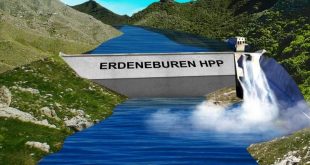

Speaking from Adelaide in Australia, Tyler noted that the last year had been one of “challenge and opportunity for us all.” She then provided a brief history of nickel, which is fast becoming the “workhorse” of battery technologies and plays an essential role in decarbonizing the global economy.
SIGN UP FOR THE SUPPLIERS DIGEST
Sign Up
She said that the answer to many of the challenges the world faces could be found in the resources that the mining industry finds and produces.
For example, the industry provides essential products for economic growth and the transition to a low-carbon global economy by enabling cleaner power generation, more efficient transportation systems, and battery storage technologies.
“As exploration professionals, we are vital to the delivery of a better future,” Tyler said. “We play our part at the front end of the value chain, and we unlock the resources the world needs.”
Exploration, she continued, is the lowest cost path to growth and value creation for BHP’s shareholders and is critical to the company’s future, noting that BHP is increasing its presence around the world, including opening an office in Toronto.
Owning the best assets in the best commodities is “a dynamic process that involves rigorous analysis, reflecting a constantly evolving world,” she said. Citing the success of BHP’s Mount Whaleback iron ore mine in Western Australia, which, over the past 50 years has produced some of the highest grade iron ore for use in the steel that has shaped the modern world.
Tyler recognized that the company “cannot just do more of what we’ve done for the last 30 years” and believes that the “golden years” of exploration are yet to come. “We must think big, innovate and apply new technology to unlock opportunities to safely find the resources of the future.”
However, to unlock this potential, two significant challenges face the industry: the scarcity of high quality resources and higher sustainability standards.
Discovering tier one resources has become more technically challenging. Large, high quality discoveries that have a realistic chance of being developed into operational assets within an appropriate timeframe are become more challenging to find, Tyler noted.
“BY HARNESSING TECHNOLOGY, WE CAN MAKE THE EARTH AT 400 METRES DEPTH AS TRANSPARENT TO EXPLORATION AS THE SURFACE OF THE EARTH IS TODAY”
BHP’s chief technical officer Laura Tyler
In practice, this means making more discoveries like the Oak Dam copper deposit in South Australia. The deposit, she said, was discovered in 2017 by taking a “fresh approach” by looking at the “science through the lens of the Mineral Systems Framework and the knowledge” gained on iron oxide-copper-gold ore deposits at BHP’s Olympic Dam underground mine, also located in South Australia.
The second challenge is higher expectations of sustainability, Tyler said, with the impact of emissions, the stewardship of our planet, and maintaining the quality of our atmosphere, hydrosphere, biosphere, and terrasphere, key concerns for humanity.
“The interesting catch to all this is that under even the most aggressive decarbonization scenarios, the world needs more minerals, and therefore more discoveries leading to more mines,” she noted.
Limiting increases in average global temperatures to less than 1.5 degrees Celsius (as stipulated under the 2015 Paris Agreement on climate change), would require almost twice as much steel in the next 30 years as was consumed in the last 30.
Copper production would have to double over the next 30 years to support the development of renewable technologies and new charging infrastructure for electric vehicles. Nickel production would need to increase almost four-fold to power the next generation of battery technologies required for the forecast demand from electric and hybrid vehicles.
Tyler believes that technology will be vital to making future discoveries to meet this increasing demand for ‘green’ metals. “By harnessing technology, we can make the Earth at 400 metres depth as transparent to exploration as the surface of the Earth is today.”
Taking a more holistic view of deposit forming systems will also create new insights and investing in new technologies such as real-time sensors, multi-physics arrays, and data analytics will accelerate decision making and reduce the logistical effort, improving confidence in discovery.
Tyler noted that BHP is collaborating with industry partners to develop the next generation of sensors designed to maximize data collection and minimize the footprint on the ground.
The company has also partnered with Ideon Technologies Inc. This Canadian technology company is pioneering the application of muon (high energy cosmic rays) tomography to identify and image mineral and metal deposits. BHP is now using muon detectors to image underground sulphide orebodies at its nickel mines in Western Australia.
source: https://www.mining.com/pdac-think-big-exploration-opportunity-is-huge-says-bhps-laura-tyler/
 www.uuluurhai.mn Уул уурхай.мн
www.uuluurhai.mn Уул уурхай.мн




